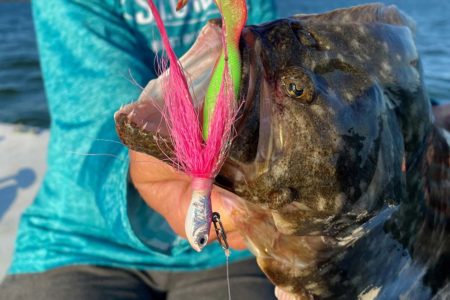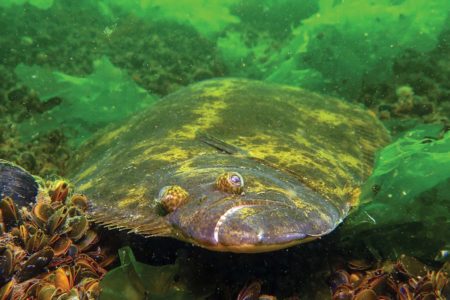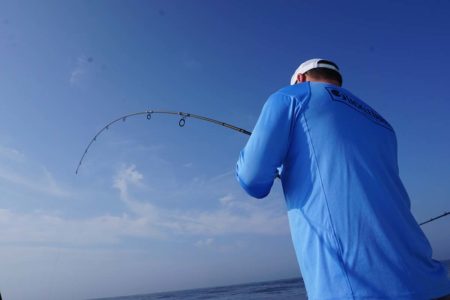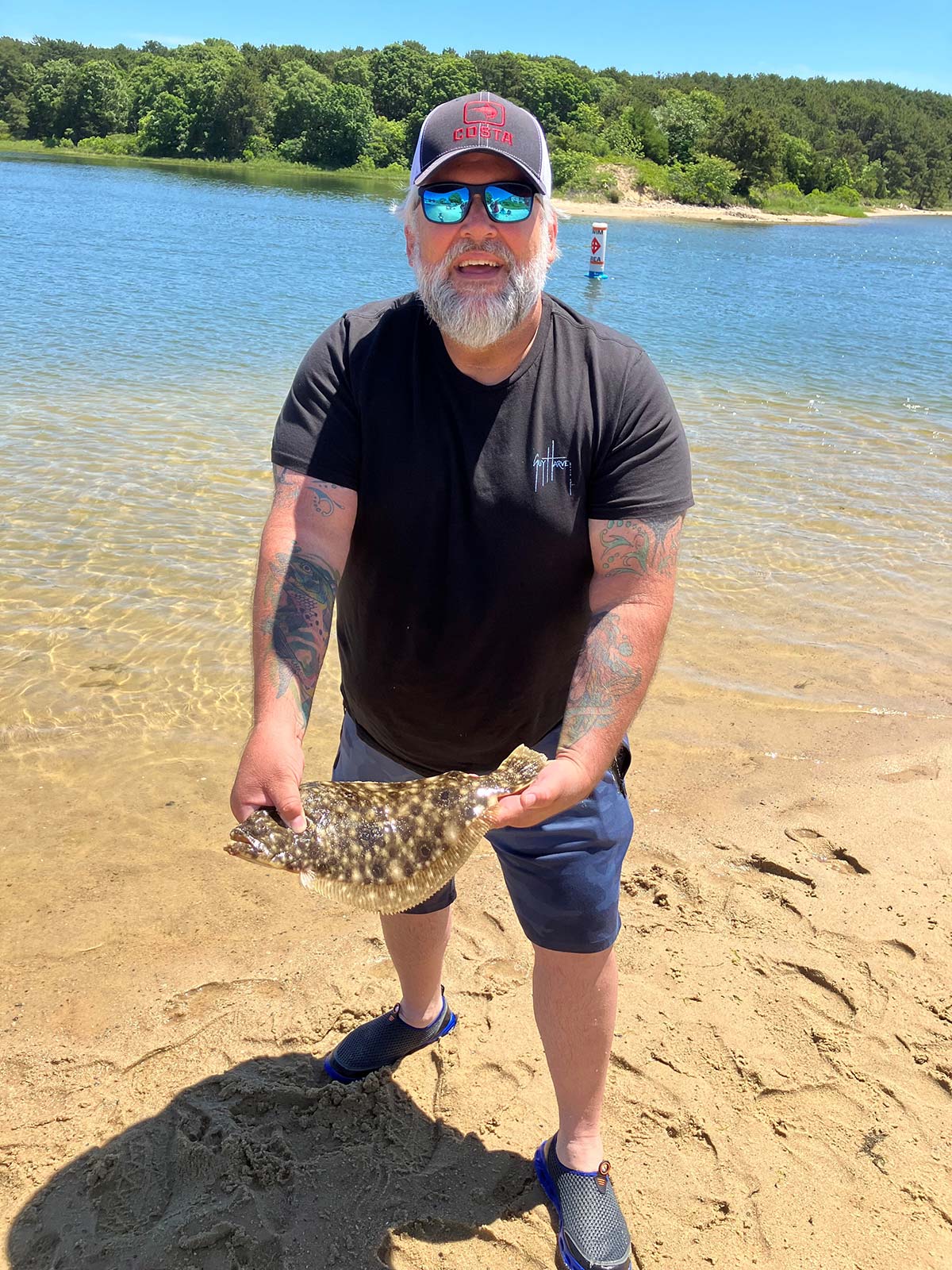
An unexpected discovery has revealed a viable shorebound fluke fishery on Cape Cod.
A few years back, I’d heard whispers of a weakfish bite on the south side of Cape Cod in some of our upper bay areas. Typically, by late May these locales will have schoolie bass setting up temporary residency; soon to be followed by bigger fish. This year, however, the schools of herring flooding into their spawning grounds, the salt ponds and back bays, attracted some infrequent visitors. These waters outline the furthest reaches of the weakfish’s range, and in my decades of fishing, I had yet to catch one; so the decision was easy for me to switch my plans when the bass bite was slow to take off.
I spent an hour swapping out my typical springtime striper plugs for smaller jigs and soft plastics. Then I opened up the map app on my phone and highlighted some locations that I thought should be ideal. I was focused on bottleneck locations up inside these south side bays. These locations would have increased current on the flood and the ebb, the preferred conditions of “tiderunner” weakfish. Upon my arrival, it was quickly apparent that the weakfish had moved out; but all was not lost. I would soon find out that there was another species swimming among the scattered bass and absent shadows of weakfish that had found the warming, bay waters to their liking.
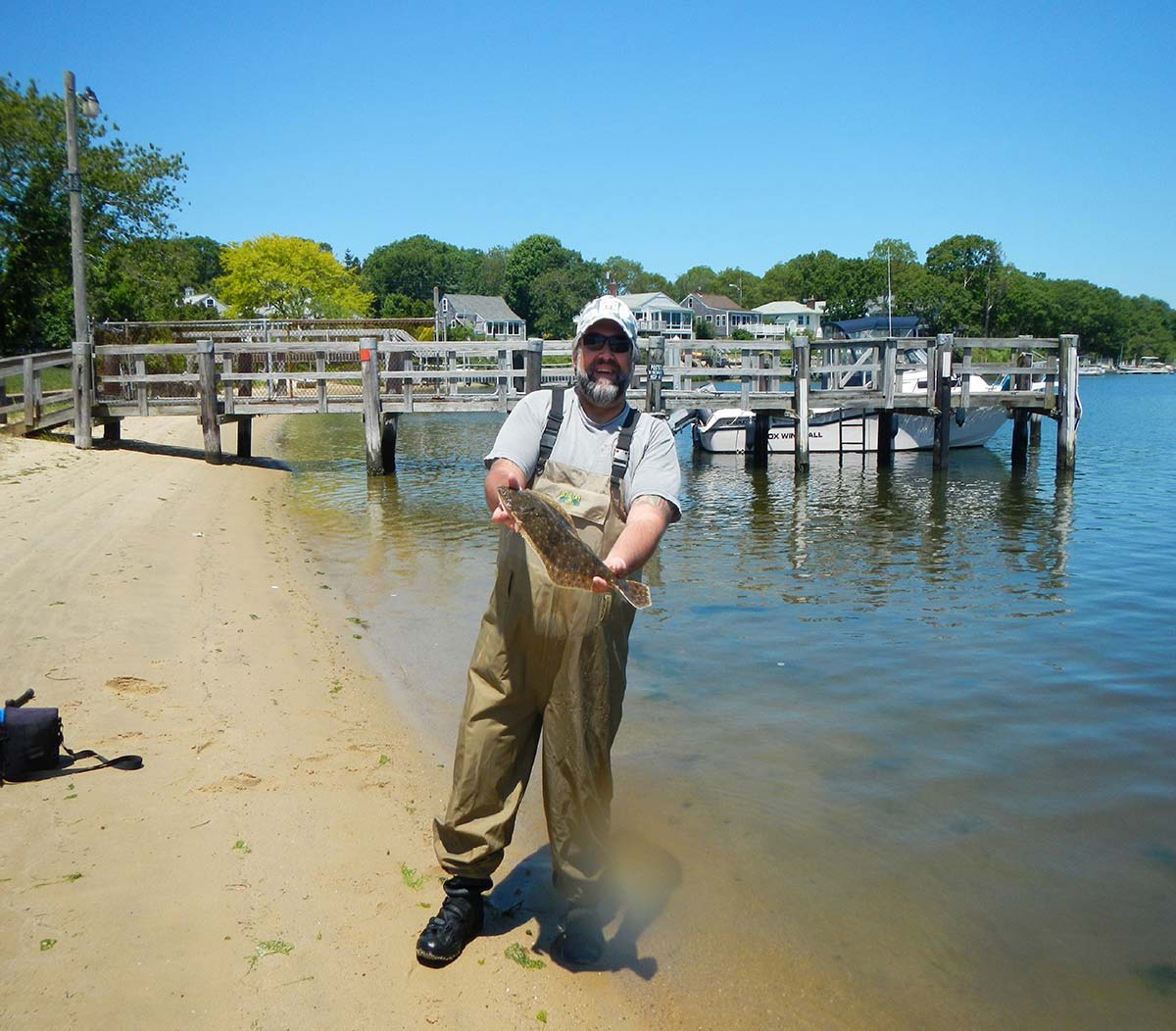
Lady Luck
Some years back, during a vacation to southwest Florida, I had the chance to fish the grassy flats where speckled trout were the target. The lure of choice? A simple jighead, paired with a 3-inch Gulp shrimp. Taking into account the success of that trip, and that the weakfish is essentially a close cousin of the speckled trout, I opted for a similar lure during this initial excursion chasing weakfish. Pulling my waders on, and slinging my tackle bag over my shoulder, I grabbed my light, 8-foot surf rod, and snuck through the sandy path towards the shoreline.
My first cast into the expanding bay, the quickly-flooding tide pouring through the gap, resulted in a bump, as I bounced the jig from the calmer waters into the main flow. The unseen predator did not find the hook on my first cast, and was short on my second and third, although each drift produced a bump. On my next cast, I kept my jigging low, sharp, and slow, and that fourth drift was met with a solid hit. The fight seemed familiar, not that I knew what to expect from a weakfish; and it soon became apparent the short bursts were the result of a beautifully painted summer flounder, or fluke. I slid the flatfish onto the gentle sands of this hidden beach inside Waquoit Bay, admiring the patterns and spots that dotted its topside. At 15 inches, the fluke was a bit short, so I gently released it at my feet and watched as the fish shimmered and effortlessly disappeared under the sand before my eyes, amusing me just as much today as it did when I was a kid.
I figured this may have been a one-off encounter, and reset my focus for my next cast intended for weakfish. Again, a swing and a miss, followed by another, and then a good smack, as my line came tight. Another determined fluke was putting up a worthy fight on the light rod, and popped off as it neared the shallows. It was apparent that finding these hungry backwater fluke was no “fluke” after all, and my next cast proved it. A 17-inch fish soon graced the sand, and was gifted to a grandmother who appeared on the beach with her young grandson. On my next cast, I waved them over, handed my rod off to the boy, and helped him reel in his first ever fish, another 15-inch specimen. Seeing that little kid wide-eyed and softly touching the back of the fish made for smiles all around. They would soon head down the path towards home and naptime, leaving me to reaffirm what I knew was a new option for those days when the bass get a case of lockjaw, or if looking to get some fish in the cooler for fried flounder dinner. I finished off the morning with a dozen flounder, three legal-sized fish mixed in. This was in addition to the tap-tap bumps I had been missing the hookups on, which ended up being scup, and more frustrating than satisfying; but the plan was in place for more exploration of this shore-bound fluking.
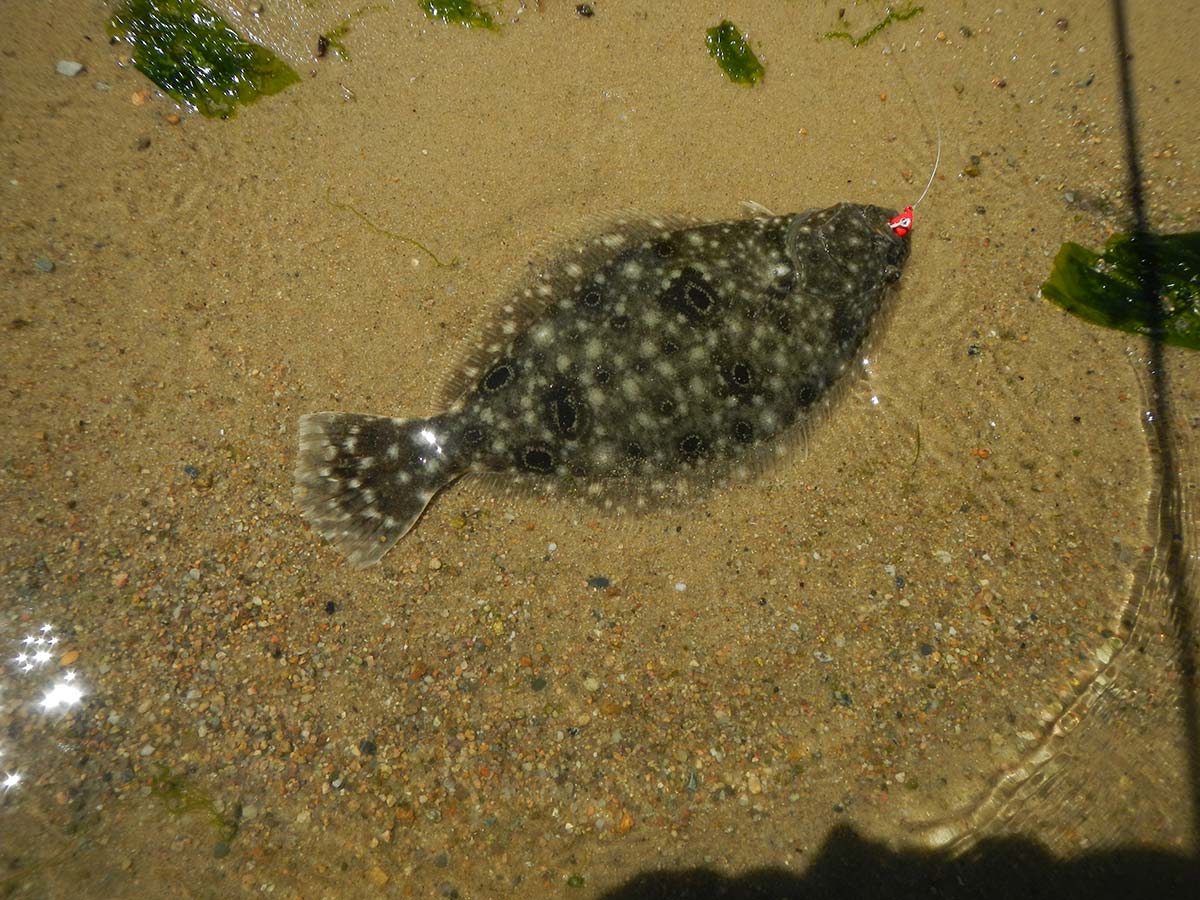
Fluke Focused
The following spring, I intentionally planned for hunting these fluke in other nearby salt ponds, to try and recreate the success of the previous season. One of these excursions I planned out included going inside a barrier beach, and working the flats of the inner bay adjacent to a channel near an area well-known for spring-time bluefishing. The tide would not be approaching max high on the outside until later in the afternoon, giving me plenty of time to ply the flats for flatfish. Leaving my bluefish gear in the truck for later, I gathered my light tackle outfit, and a selection of jigheads from ¼ ounce to 1 ounce.
| FLUKE FINDER |
| The Cape’s south side features an abundance of salt ponds between Falmouth and Osterville. Most, if not all, of these salt ponds have fluke potential for the shore-bound angler. You can use Google Earth or other satellite images to locate channels that abut shoreline access or wade-able flats. You can also find potential hotspots by considering how the current will play against the channel edges, bridges and other structure. Next time you’re scrolling around on Google Earth, check out Falmouth Harbor, Little Pond, Great Pond, Green Pond, Bourne’s Pond, Eel Pond, Waquoit Bay, Popponesset Bay, Cotuit Bay and West Bay and see what inspires you. |
Although, I’ve found that I prefer 3/8- to 3/4-ounce, I’ll include a variety of weights to account for current flow and depth. Tipping these jigs, I’ll add soft plastics like the aforementioned Berkley Gulp shrimp or swimming mullet patterns in varying colors, in the 3- to 4-inch range. Natural shrimp, hot pink, and fluorescent orange are my go-to colors, but color doesn’t seem to be as important as visibility, on the murky water days, the bite is often tough. I’ll also carry Zoom Fluke and Z-Man scented soft plastics. Baits like the Gulp offerings come in their own scented liquid; but keeping a squeeze bottle of fish attractant helps when necessary.
On this day, I started with a white 1/4-ounce jighead paired with an orange Gulp curly tail. It was a cloudy day, but we had clear, low water, and the large, expansive sand flat I was walking was now mostly dry. The clam shells cracked underfoot, as I reached the waterline, which got gradually deeper until dropping away on the edge of the channel. The red channel marker leaned slightly inward as the tide was slowly rising. The current wasn’t really cranking yet, but there was enough flow to gather baitfish, and casting up-current, I had no issue bouncing the bottom with my light jig.
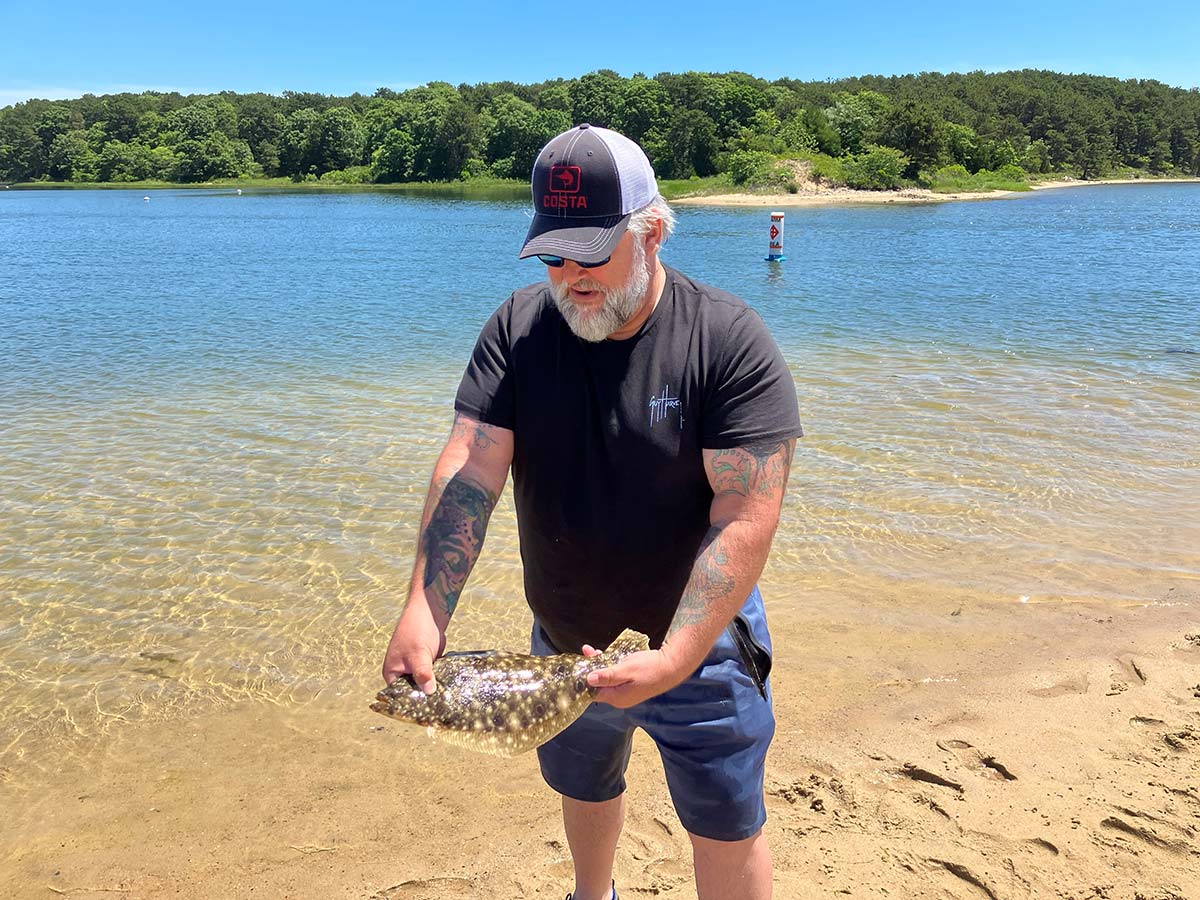
Immediately, I had an interested party, as my rod bent over with the take of my first summer flounder of the day. The hours that followed featured a steady pick, similar to my first outing; the size of fish running the gamut from juveniles to keeper-sized fish, including a nice 20-inch flattie that would end up as fish tacos later that evening. The day was capped with a couple of bluefish off the beachfront; but my goal for the day had already been fulfilled.
Sure enough, the flattie trips that followed confirmed that not only was this a solid backup plan, but it was also well worth its own targeted trips when looking for a peaceful, light-tackle outing. Give it a try this spring and early summer, I’m betting that you’ll be pleasantly surprised. I know I’ll be out there again this spring and maybe, just maybe, I’ll see you in the suds.

